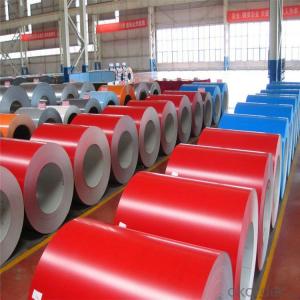Reinforced steel, commonly known as rebar, is a critical component in modern construction, providing strength and stability to concrete structures. Choosing the right rebar is essential for ensuring the safety and longevity of any construction project. This article aims to guide you through the process of selecting the right rebar for your needs, with a touch of personality and a dash of emotion to make the topic more engaging.
The Backbone of Construction: Rebar’s Role
Rebar acts as the backbone of reinforced concrete, providing tensile strength that concrete lacks on its own. Without rebar, concrete structures would be brittle and prone to cracking or breaking under stress. By incorporating rebar, we can create strong, durable, and resilient structures that stand the test of time.
The Art of Choosing the Right Rebar
Choosing the right rebar is an art that requires a deep understanding of the project’s requirements and the properties of different types of rebar. Here are some key factors to consider when selecting rebar:
1. Diameter: The diameter of the rebar affects its strength and the amount of concrete cover required. Thicker rebar provides more strength but may require more concrete to ensure proper bonding.
2. Grade: Rebar comes in various grades, each with different yield strengths. Higher grade rebar can support more weight but may also be more expensive.
3. Surface Texture: The texture of the rebar’s surface can impact its bond with the concrete. Deformed rebar, with its ridges, offers better grip, while smooth rebar is easier to handle but may not bond as effectively.
4. Corrosion Resistance: Rebar can be susceptible to corrosion, especially in marine or chemically aggressive environments. Choosing rebar with adequate corrosion resistance is crucial for long-term durability.
5. Availability and Cost: The availability of rebar in your area and its cost are practical considerations that can influence your decision.
Beyond the Basics: Special Considerations
While the basic factors mentioned above are essential, there are special considerations for specific applications:
– Earthquake Zones: In regions prone to earthquakes, ductility becomes a critical factor. Rebar with higher ductility can stretch without breaking, absorbing energy and reducing the risk of structural failure.
– Seismic Design: For seismic design, rebar must meet specific requirements to ensure it can withstand the forces generated during an earthquake.
– Exposure to Salt: In coastal areas or regions with high salt content, rebar with enhanced corrosion resistance, such as epoxy-coated rebar, is necessary to prevent premature degradation.
The Human Touch: Personalizing Your Rebar Selection
Selecting rebar is not just a technical decision; it’s also a personal one. The choice of rebar can reflect your commitment to quality, safety, and sustainability. Here are some ways to add a personal touch to your rebar selection:
– Sustainability: Opt for rebar made from recycled materials or produced using sustainable methods to reduce your project’s environmental impact.
– Aesthetics: While primarily functional, rebar can also contribute to the visual appeal of a structure. Consider the finish and texture that best complements your design.
– Innovation: Embrace new technologies and materials that can improve the performance of your rebar, such as self-compacting concrete or rebar with integrated sensors for monitoring structural health.
The Emotional Side of Rebar: Why It Matters
Rebar is more than just a material; it’s a symbol of strength and resilience. When you choose rebar for your project, you’re making an investment in the future. You’re ensuring that the structures you build will stand strong against the test of time and the forces of nature. There’s an emotional satisfaction in knowing that your choice contributes to the safety and well-being of those who will inhabit these spaces.
Wrapping Up: Making an Informed Decision
In conclusion, selecting the right rebar is a multifaceted process that involves technical knowledge, practical considerations, and personal values. By understanding the role of rebar, considering the various factors that influence its selection, and adding a personal touch, you can make an informed decision that aligns with your project’s goals and your own vision. Remember, the rebar you choose today will shape the structures of tomorrow.
So, the next time you’re faced with the task of choosing rebar, take a moment to consider not just the technical specifications, but also the story it will tell about the structures you’re building and the legacy you’re creating. After all, rebar is more than steel; it’s the foundation of our built environment and a testament to our collective resilience.

